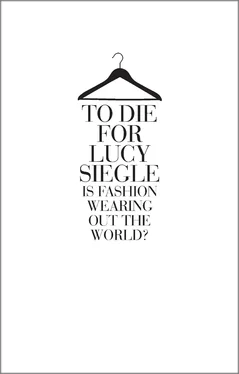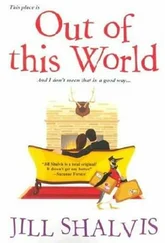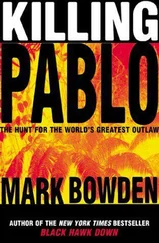Another major feature of our wardrobes back then was that a large chunk of our clothes would have been manufactured in Britain, from fibre that was even processed or finished here. From leather stitching and sewing in Somerset to the ancient worsted industry (turning wool yarn into textiles for suiting) in Bradford and Huddersfield, to Coats Viyella producing for M&S in Manchester, ‘Made in England’ was not a surprising label to see attached to a piece of clothing. Nor did it mean artisanal one-man-band production, as it often does now, when more often than not courageous designer/makers try to give the concept of home-grown fashion some resonance. Until just over a decade ago M&S, something of a UK clothing behemoth, sourced 90 per cent 28of its own-label clothing in Britain. As you may remember, it was called St Michael, and it was the only clothing that M&S sold. During World War II British clothing production units developed expertise in knocking out uniforms on an assembly line. It wasn’t a big stretch to alter this to menswear, and ultimately to the more profitable womenswear. There was always a degree of outsourcing, i.e. sending cut-and-sew work (the actual sewing part of the assembly) to manufacturers abroad, but this tended to be limited to manufacturers in Hong Kong, Taiwan and Korea 26. In fact it’s fair to say that we had built up a rather impressive peacetime army of tailors, machinists, cutters, finishers, colourists, weavers and of course designers. They were served by the sort of infrastructure, of farmers producing sheep for wool, slaughterhouses producing for the leather trade, cobblers, menders and recyclers (who in those days took the more prosaic form of rag-and-bone men), that today’s sustainable style warriors can only dream about.
You know how the story goes. In 1981 the British clothing and footwear retail market imported just 29 per cent 27of all it sold. By 2001 the figure had soared to 90 per cent. Any pretence to style self-sufficiency these shores once had was well and truly kicked into touch.
But the main, overarching distinction between then and now is that back then the fashion industry had built-in air vents to ease the pressure, formalities and systems that dictated the pace of consumption and production. The production model was based on a critical distinction between ‘fashion’ and ‘garments’. At the top of the tree was couture. Its USP was the amount of skilled labour inherent in each piece. The look was in the hands of the designer and creator, and the volume of repeated pieces was limited to tens at the most. Final finishings were typically handmade, and the buyer might not see the finished piece until the very end of the process. This meant that shows could only occur twice a year. The fashion weeks that take place today in New York, London, Paris and Milan (and everywhere else from Copenhagen to Tokyo, Toronto and Beijing) are derivative of these couture seasons.
The next rung down was the ready-to-wear lines – prêt à porter . Here the process picked up a little bit of speed, and the designer/maker process became less rarefied. Exclusivity was preserved in the level of design and often by the name of the designer, but the manufacturing process was more industrialised. Pieces were repeated in the hundreds and thousands.
Next came mid-market fashion, highly industrialised and cut from a standard pattern. These items were essentially basic garments with a fashion twist, and they were designed with a shorter lifespan in mind: it was usually envisaged that they would just last the season that ran for half the year – autumn/winter and spring/summer.
And then came the everyday garments: jeans, T-shirts, sweaters – the basic building blocks of a wardrobe.
Today we take it as read that everything we buy will have a direct lineage to the runway. Even wardrobe basics are expected to be infused with the aura of big design and big designers. The distinction between ‘garments’ and ‘fashion’ has become ever looser, until now we use those terms interchangeably. In effect, basic garments have become fashion. We expect everything, including knickers, nighties and stuff you wear to the gym to sweat in, to be up-to-the minute and preferably linked to a superstar designer.
So, we buy fast and cheap and in huge quantity. Not only is the global wardrobe heaving, its contents are being discarded and refilled at a spectacular rate. A 1998 study 29by Dutch academics put the lifespan of the average piece of clothing in a (Dutch) wardrobe at three years and five months, during which it was on the body on a total of forty-four days. Until more up-to-date research is carried out it is difficult to assess today’s fashion turnover, but there is unanimous agreement that it has become much, much faster. We know by the rate at which we buy and the amounts we chuck into landfill each year that many pieces can expect to have the lifespan of a mayfly.
Meanwhile, someone like Lucy is locked in a cycle of sustaining a celebrity look on the non-salary of an unemployed graduate. Cricket, with its Prada and Balenciaga, is well out of reach. You might say it is a miracle that Lucy was able to sustain any type of wardrobe growth at all, but she managed, courtesy of another wardrobe miracle: fast fashion.
Конец ознакомительного фрагмента.
Текст предоставлен ООО «ЛитРес».
Прочитайте эту книгу целиком, купив полную легальную версию на ЛитРес.
Безопасно оплатить книгу можно банковской картой Visa, MasterCard, Maestro, со счета мобильного телефона, с платежного терминала, в салоне МТС или Связной, через PayPal, WebMoney, Яндекс.Деньги, QIWI Кошелек, бонусными картами или другим удобным Вам способом.












